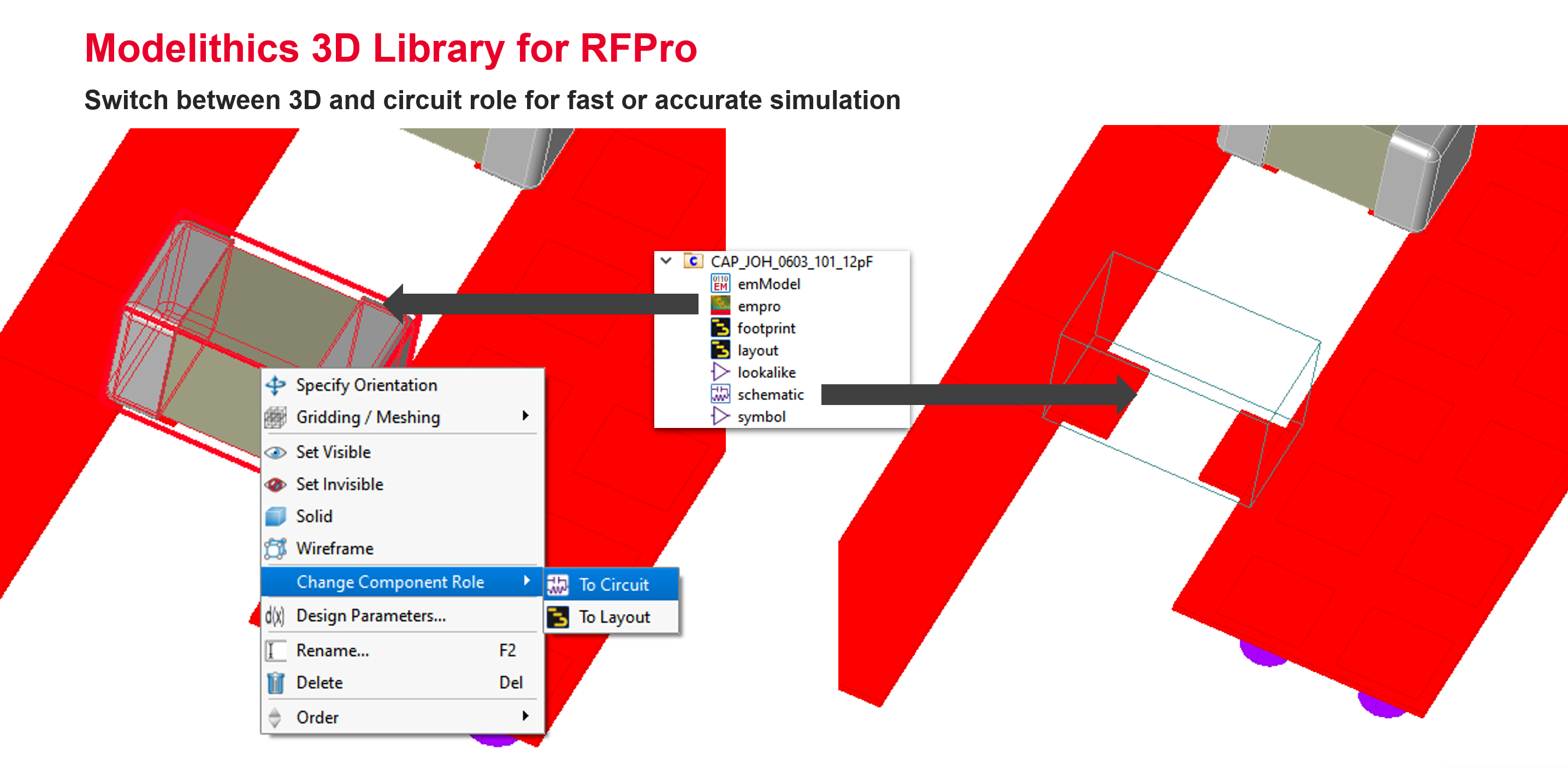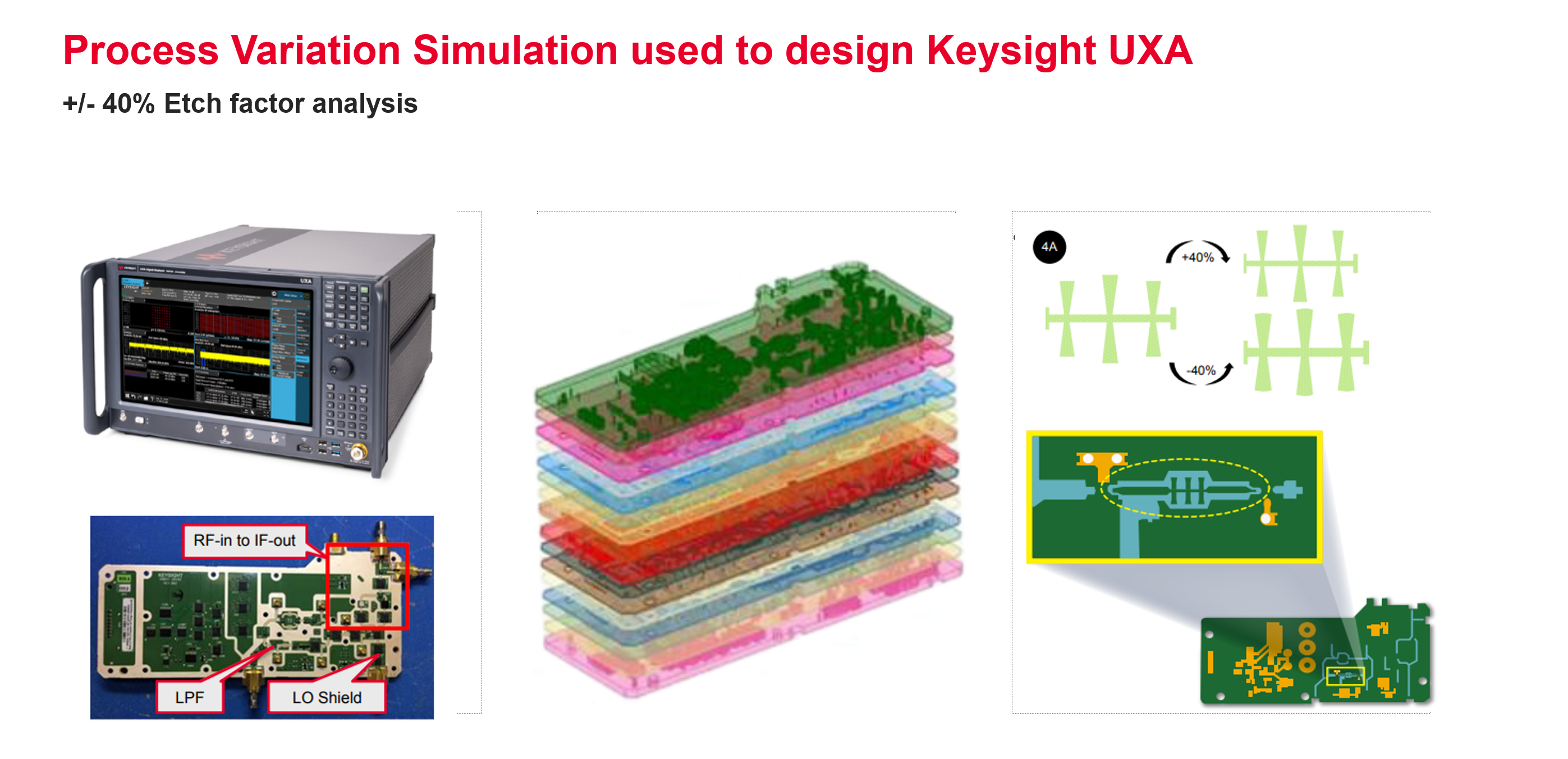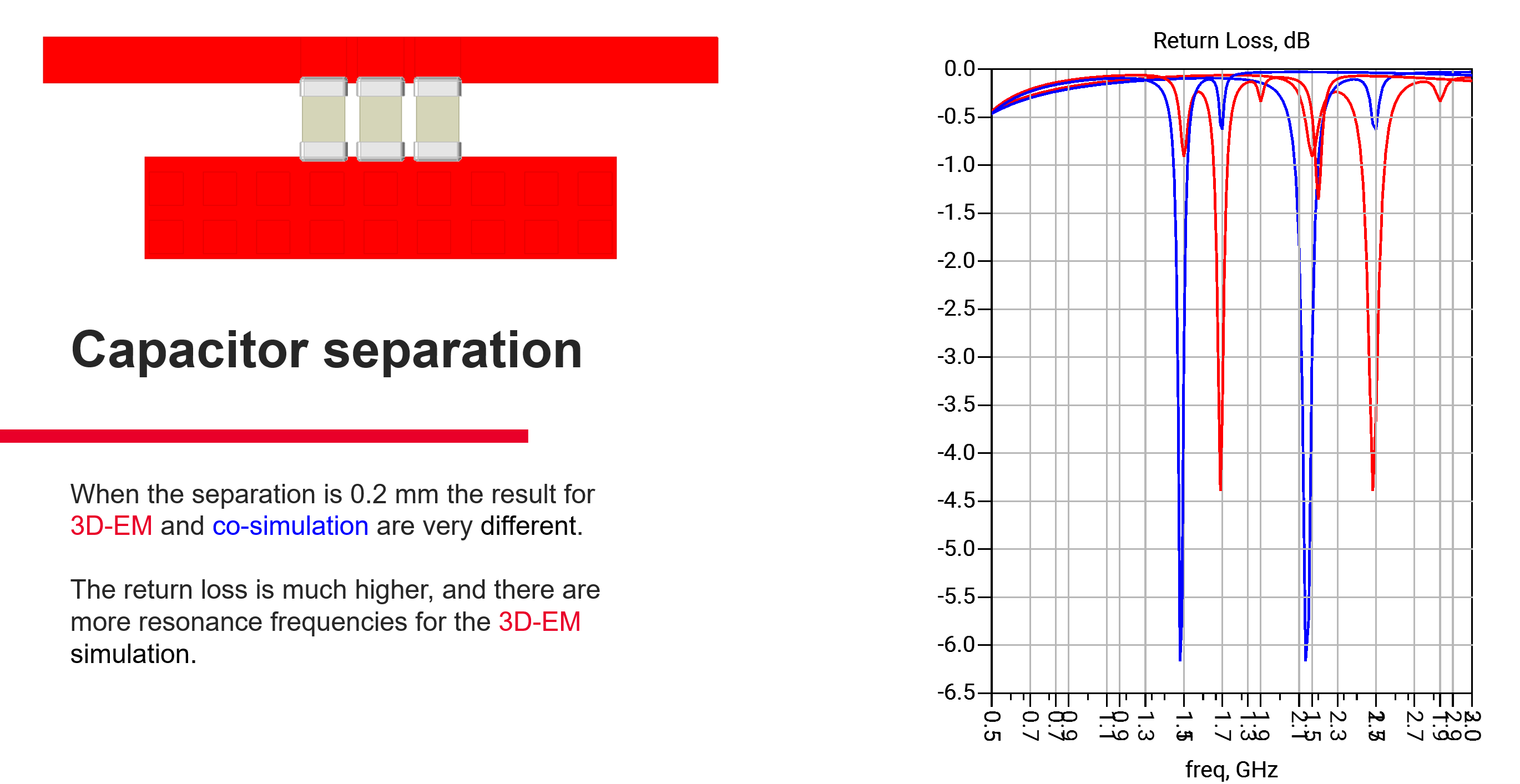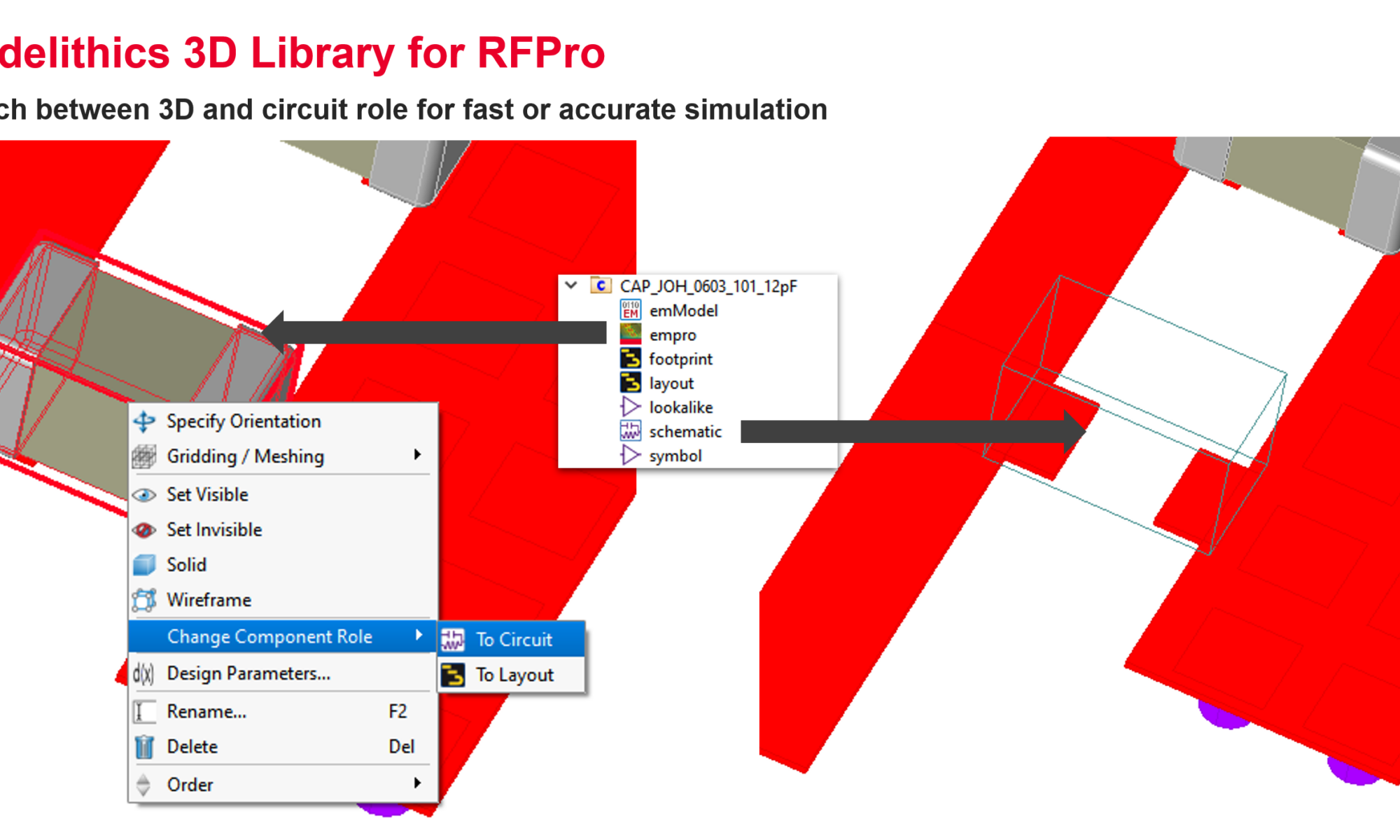Traditional RF board design strategies based on circuit simulation worked at lower frequencies and relatively large spacing between components. Higher frequencies and densification dominate RF designs now, where corresponding wider bandwidths and tighter layouts with closely spaced components produce more complex 3D electromagnetic (EM) interactions. Relying on circuit simulation alone with simplistic models lacks sufficient accuracy and can result in costly re-spins. Keysight and Modelithics have teamed up for an advanced RF board simulation workflow in Keysight ADS and RFPro with 3D passive vendor component models supporting highly accurate, automated 3D EM-circuit co-simulation seeking better chances of RF design success.
WATCH REPLAY NOW: Maximizing RF Board Accuracy with 3D EM and Scalable SMD Circuit Models
Why 3D passive component models are needed
Keysight RF design teams often quote the phrase, “At high frequencies, with every resistor you buy, you get a free inductor.” It’s a bit of an oversimplification, but the point is valid. Packaged and soldered to a board, every passive resistor, capacitor, and inductor can introduce non-schematic parasitic resistance, capacitance, and inductance values. Higher frequencies and layout densities also increase the chances of electromagnetic coupling between components.
Unaccounted for, these parasitics and proximity EM coupling effects can shift circuit performance and frequencies. Circuit simulation alone might get spoofed into thinking all is well. Ultimate high-frequency RF board simulation accuracy depends on circuit and EM modeling and simulation working together. Without both simulation modes, the risks of board re-spins skyrocket. Designers may still be hesitant about increased simulation times in their workflow. Circuit simulation typically runs quickly, while EM simulation with more complex models, solvers, and a 3D volume to analyze usually takes longer.
Modelithics specializes in accurate equivalent circuit models for passive components. Each measurement-based model captures a part’s parasitics. Models then scale across all values of a part series. They also scale with respect to the substrate the part mounts on and the solder pad dimensions.

However, Modelithics goes a step further. “Our models fit directly into the ADS and RFPro workflow, allowing fast initial circuit simulation and optimization, followed by detailed EM simulation for highly accurate results,” says Chris DeMartino, Application Engineer at Modelithics. ADS and RFPro integration eliminates the need to manually connect EM simulation data to passive component models, building all required connections automatically to enable seamless EM-circuit co-simulation at will.
Moving from simulation to real-world board producibility
Both Keysight and Modelithics keep the goal in mind – simulation is a means to an end in producing an RF board assembly that works, and accuracy often is the difference between first-pass RF design success and a re-spin. Keysight uses Modelithics models and ADS with RFPro internally, with a recent example of an RF board design for the Keysight UXA Signal Analyzer. The 16-layer, 50 GHz design thoroughly illustrates RF board assembly complexity.

“Two things have to happen to make real RF board hardware – you need to find purchasable parts and then run accurate circuit-EM co-simulations with those parts in dense, multi-layer, high-frequency layouts,” says How-Siang Yap, Keysight EDA Marketing Manager for RF/MW solutions including ADS and RFPro. “Sweeping parameters like etching width, dielectric constant, and thickness and analyzing performance with the Modelithics component models get us first-pass layout success and confidence these RF board assemblies perform as advertised when produced in volume.”
Modelithics component modules start with actual manufacturer parts, such as TDK, Murata, or Coilcraft. Keysight ADS can use gradient followed by discrete optimization to find purchasable part values for resistance, capacitance, or inductance. These discrete values drive the selection of 3D components from the Modelithics library for highly accurate circuit-EM co-simulation with RFPro. The result is an accurately analyzed, sign-off-ready bill of materials for producing an RF board with first-pass success.
Stepping through component models and RF board simulation
Yap and DeMartino discuss the details of modeling and the need for 3D EM simulation in a SemiWiki webinar illustrating this enhanced RF board design workflow. One crucial finding they show is that circuit simulation diverges from EM simulation in dense layouts as EM coupling effects increase between passive components, missing the performance degradation.

The integrated circuit and EM simulation workflow of Keysight ADS, RFPro, the Modelithics Microwave Global +3D model library, and the discrete optimization capability give designers a significant advantage for RF design success no other EDA environment offers today. Registration for this webinar is open now:
WATCH REPLAY NOW: Maximizing RF Board Accuracy with 3D EM and Scalable SMD Circuit Models
Also Read:
Chiplets-Based Systems: Keysight’s Role in Design, Testing, and Data Management
Crosstalk, 2kAmp power delivery, PAM4, and LPDDR5 analysis at DesignCon
Chiplet integration solutions from Keysight at Chiplet Summit
Share this post via:






Comments
There are no comments yet.
You must register or log in to view/post comments.